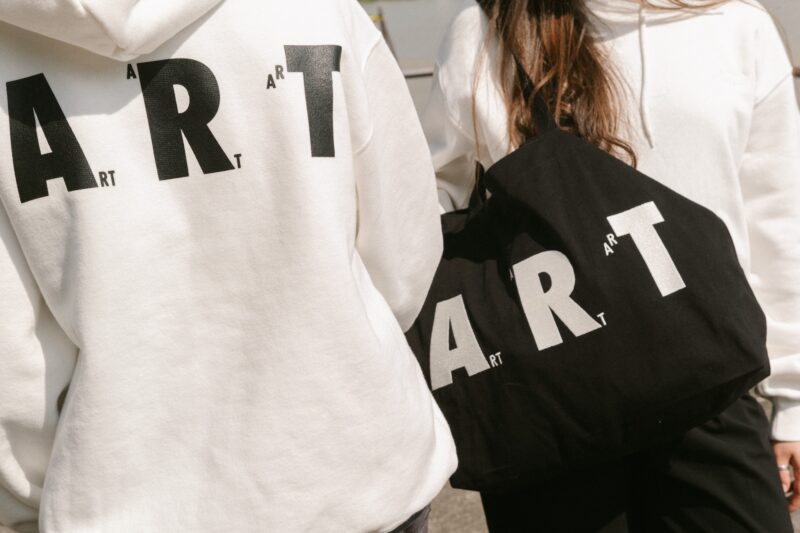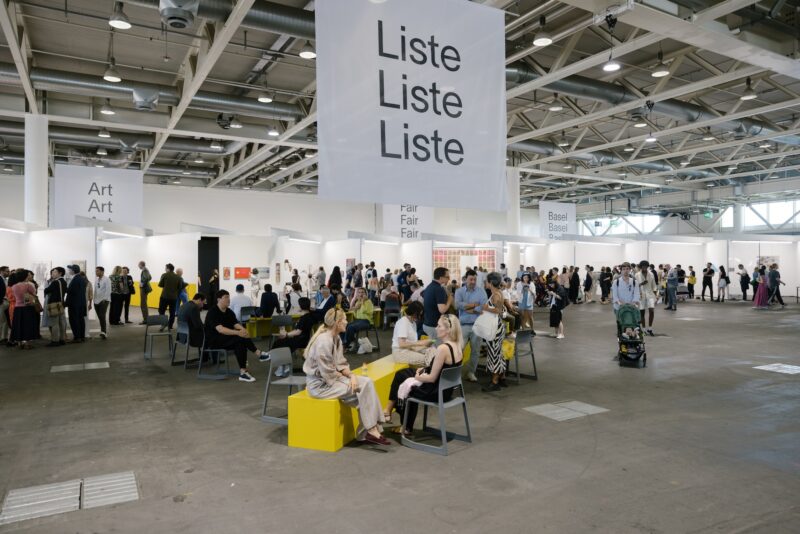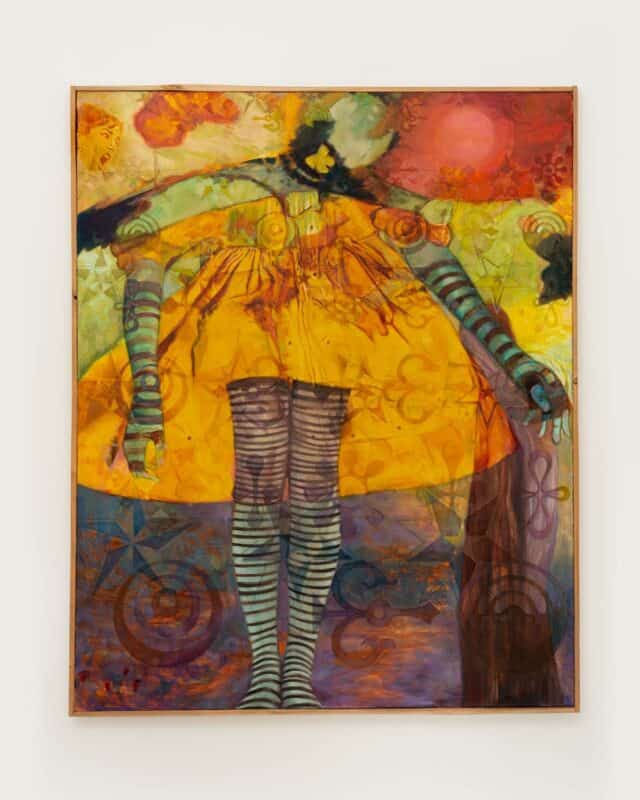Writing from Liste Art Fair, two presentations got me thinking about the flows of quotidian life and the habitation of domestic space.
Nina Porter shown by a.SQUIRE (London, UK) @asquire.ltd
Structuralist glimmers of an overlooked outside, featuring two 16mm films, sculptural and photographic objects, a.SQUIRE’s presentation of Nina Porter records a process of wayward looking.
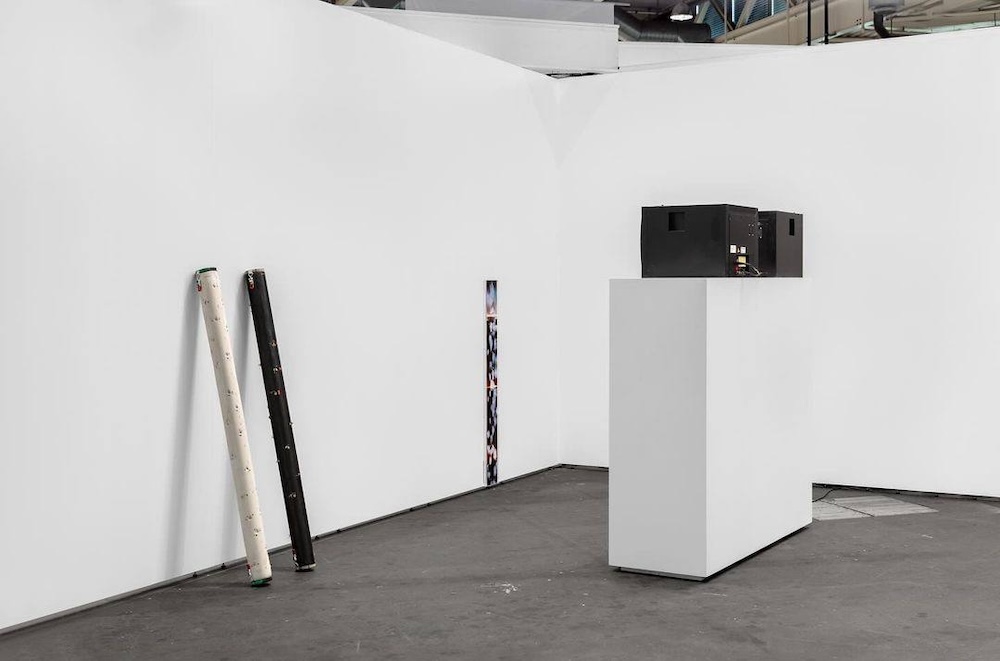
To focus near the beginning: two pipes, one black one white, rest blasé against the booth’s walls, their matt plastic skins littered with ticky tacky holes and biro-ed numeracy. Objects once active, they feel latent in their out looking placement. The remains of two tall pinhole cameras, the height of each determined by the dimensions of Porter’s bathroom, their presence here not only provides a prelude to the photographic work shown but can be seen to critically situate this series within a history and a process of public observation; a process of public management or maintenance, operating through closed-circuit eyes, which Porter seems to co-opt. Indeed, originally placed in urban spaces, from supermarkets to underpasses, these cameras operated like Porter’s loiterie stand-ins, observing shadow-bodies as they move through the clustering city space of Frankfurt.
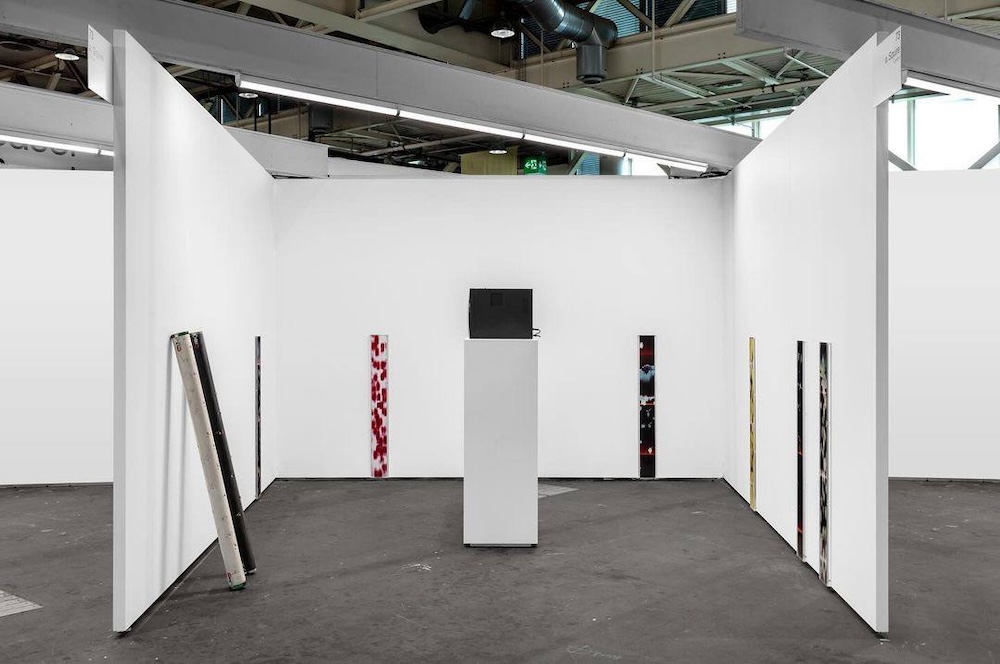
Affixed between sheets of Perspex, the skinny exposures resulting from Porter’s photographic lingerings stand affixed around the perimeter of the booth. Lilac grey and hot orange, pops and horizons of sunset and nebular, the patterned surface of these photographic objects brings to my mind the vandaled form of concrete bollards; adorned by stickers and graffiti the face of these regimented barriers provide a unique perspective on time’s passing. Similarly, as abstract recordings, Porter’s photographic objects offer an oblique measure of public life, one which affords us a chance to get beyond the dissociative flow of things and to register those multiple flashes of activity aforementioned. It is of note that each Perspex framed print contains both the positive and negative exposures from Porter’s pinhole recordings, though only one of these exposures is made visible — a critical allusion to the disembodied management of pedestrian life perhaps.
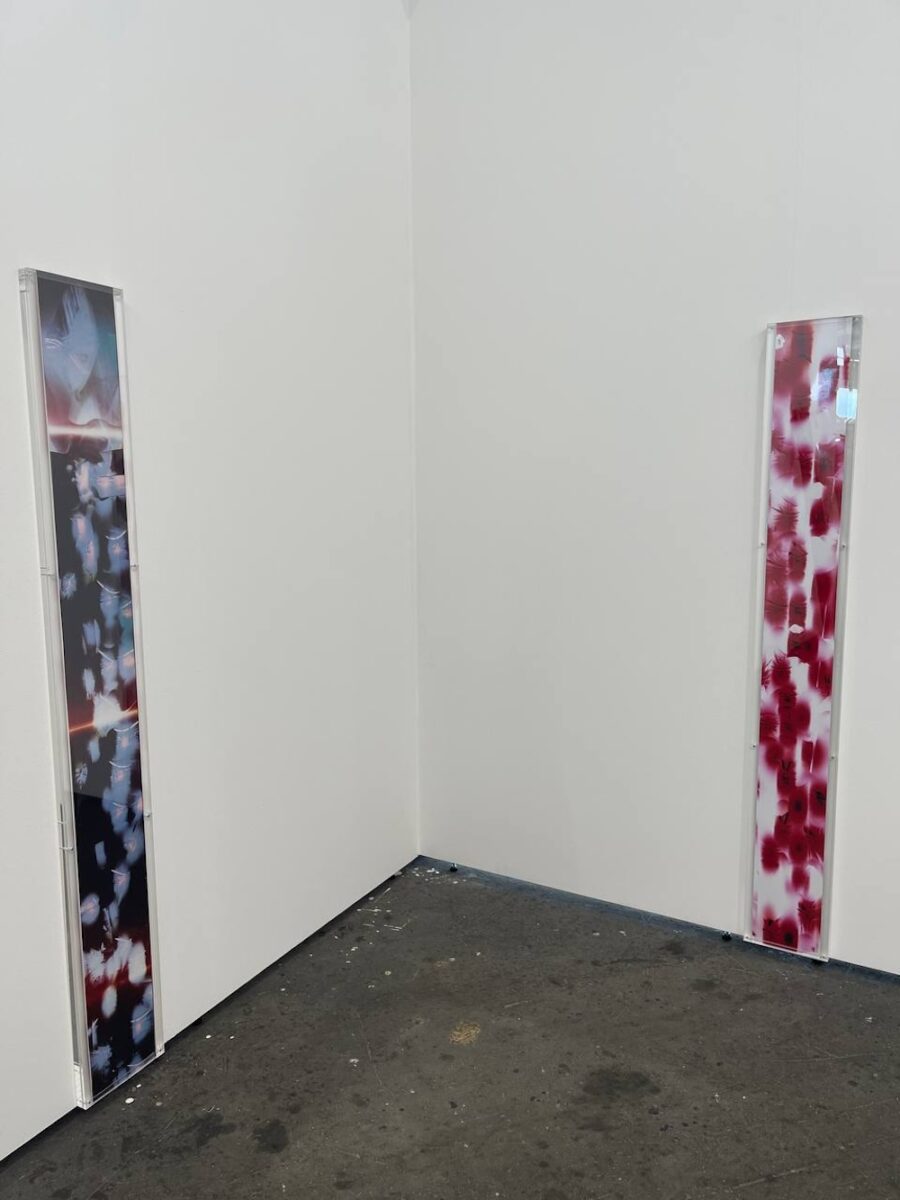
Maggy Hamel-Metsos shown by Galerie Eli Kerr (Montreal, Canada) @elikerrhq
Ten numb metal plaques, small and square and aged like statuesque name plates, dot Galerie Eli Kerr’s booth walls. Impressed in the centre of each short lines of type-written text — ‘ONE CLOCK’ ‘ONE NIGHTSTAND’ ‘ONE LAMP’ — jitter allusively, their misaligned letters mirroring each tile’s antique sheen. Titled Knowing by heart (bedroom), Maggy Hamel-Metsos’ subtle installation literally recasts items commonly found in a bedroom to create a matter-of-fact concrete poem in the round. Salvaged from sidewalks or second-hand stores, here a physical clock, a nightstand or a lamp, becomes the raw material which Hamel-Metsos melts down to form her inquisitively sized plaques, the memory of their previous lives unbound in their flat surface flutters.
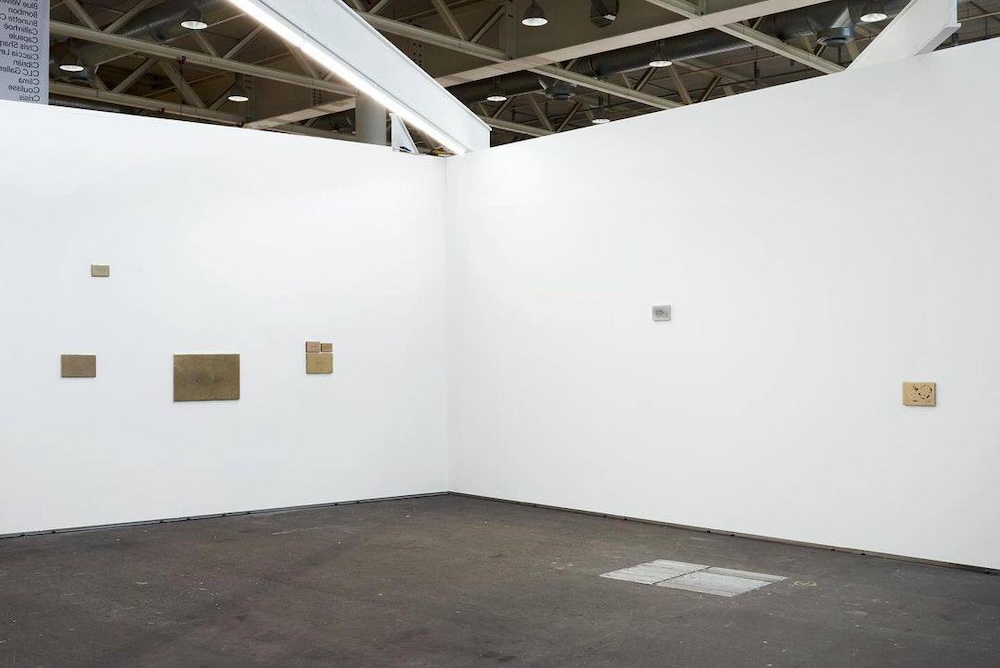
Subtly playing with associative and semiotic systems, Hamel-Metsos’ installation transcends the boundaries of set-solid signs, asking us to sit with the very concept of a clock, nightstand or lamp, leading us to ponder what these signifiers could mean and how they can be arranged in relation to our living. Further, by toying with this domestic stuff, Knowing by heart (bedroom) foregrounds both the diversity and the changeability of life and our makings of this — the lamp in my mind will look different to the lamp in yours. In an age where social life and our individuated bodies are becoming evermore artificially instructed, reduced to nothing more than refinable entities, Hamel-Metsos’ plaque-poem operates anachronistically, spotlighting potentiality abound in the personal ordering of things
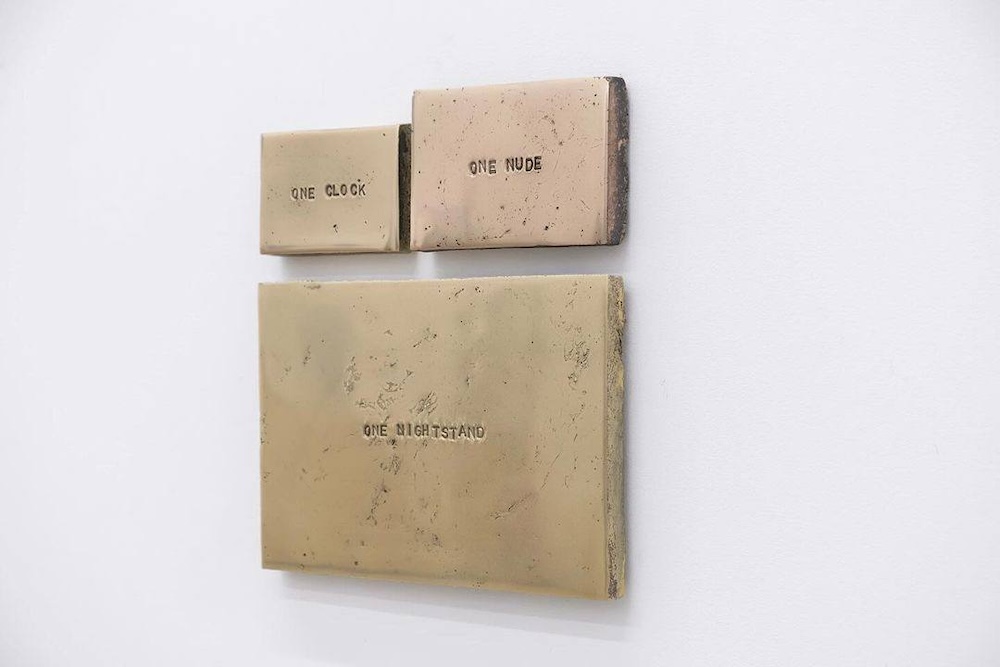
Liste Art Fair, Basel, 10th June – 16th June 2024, Messe Basel, liste.ch
